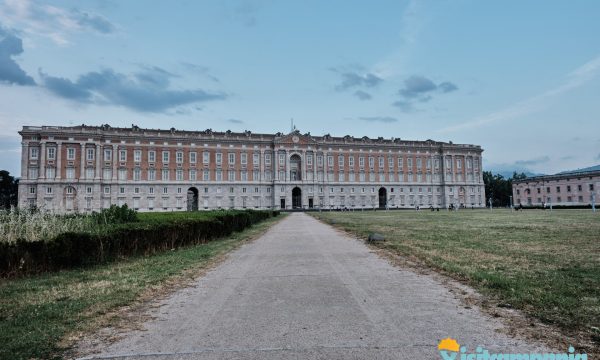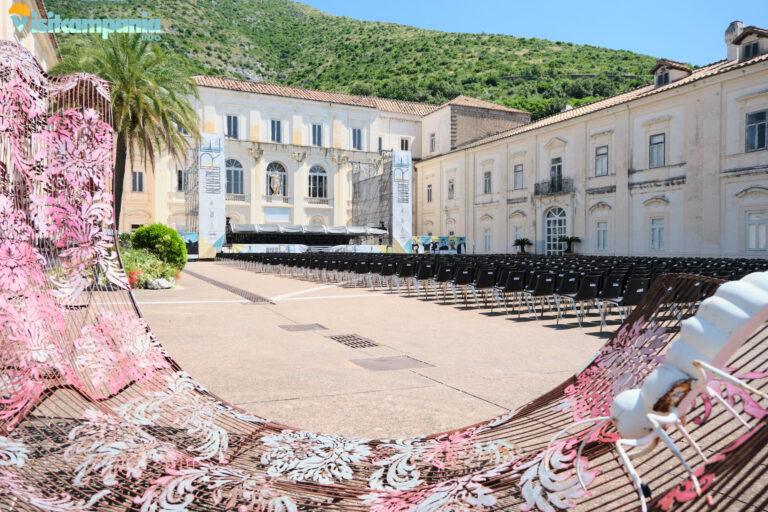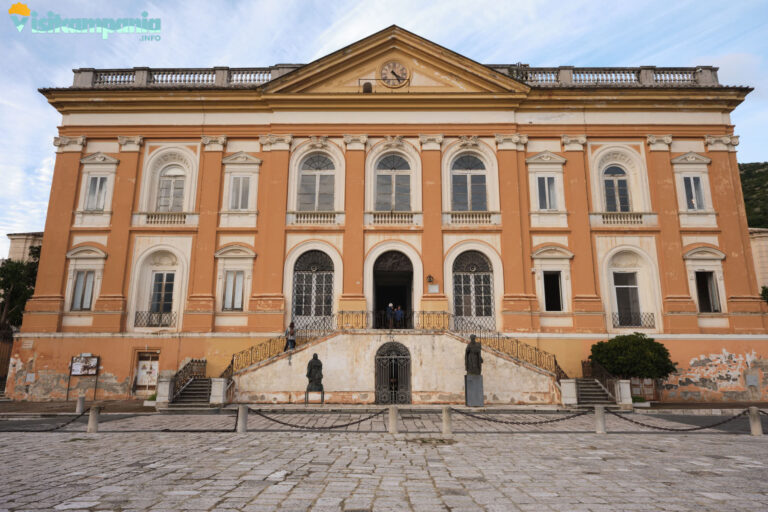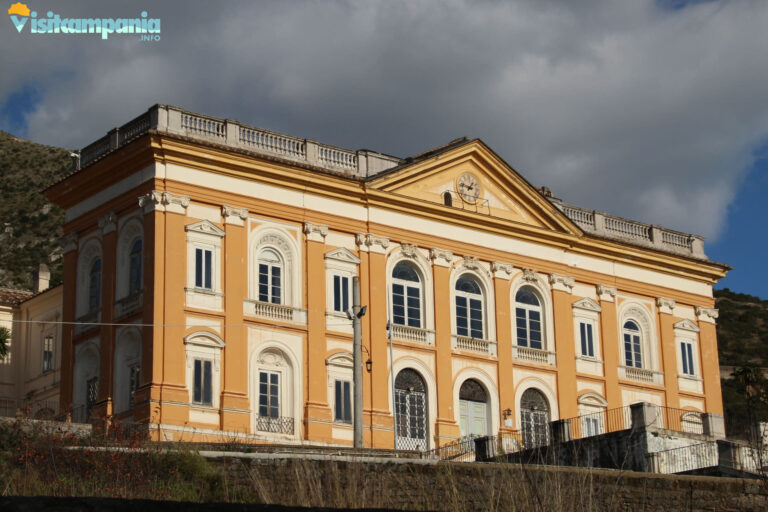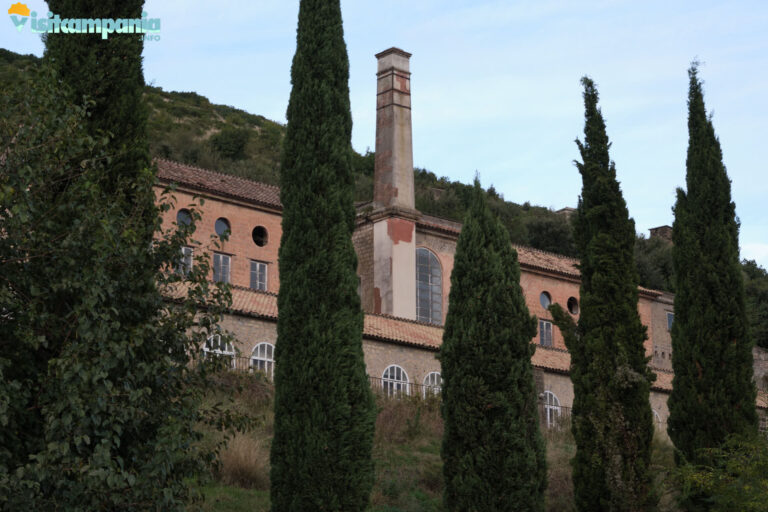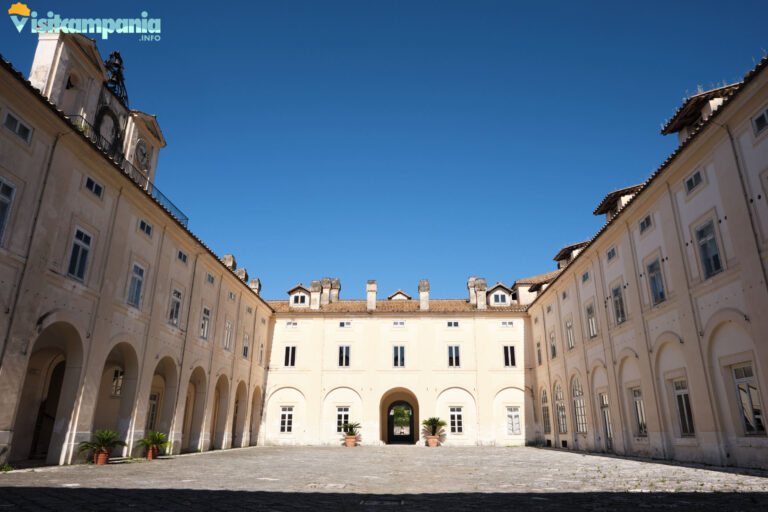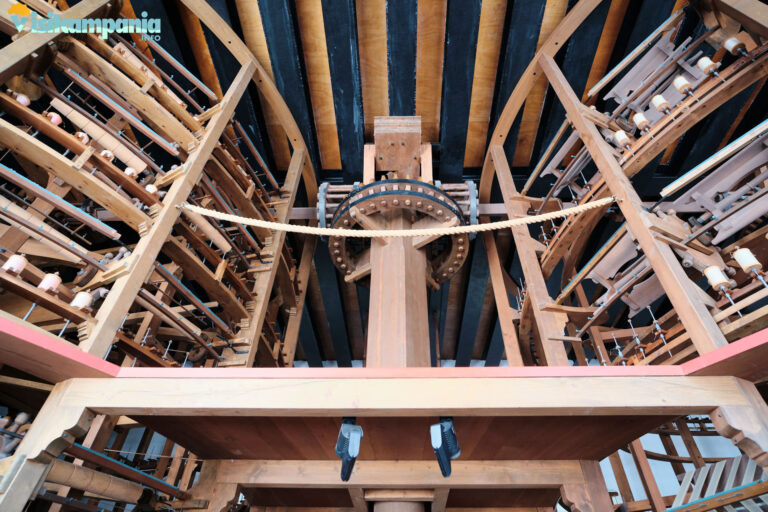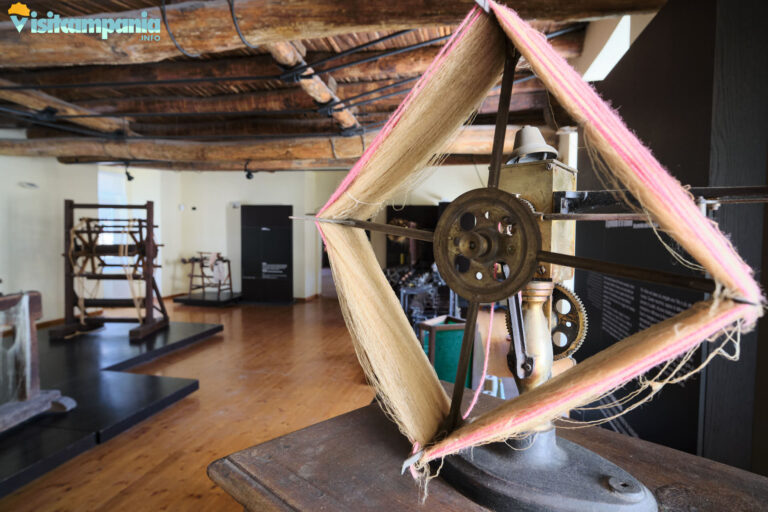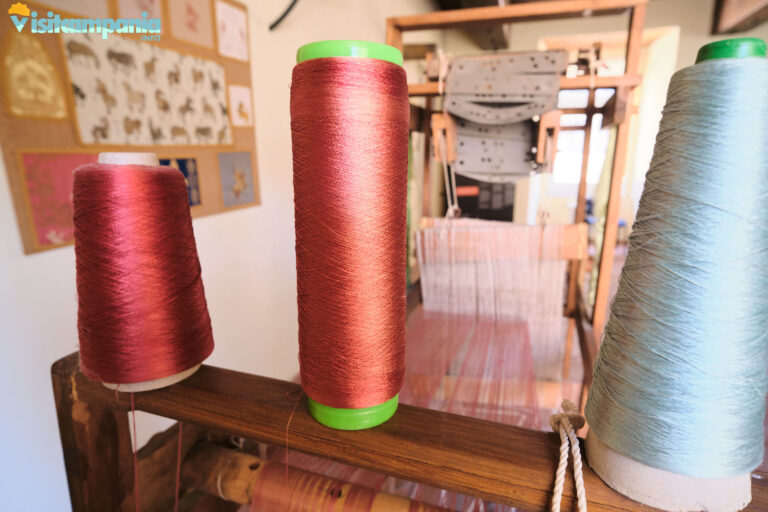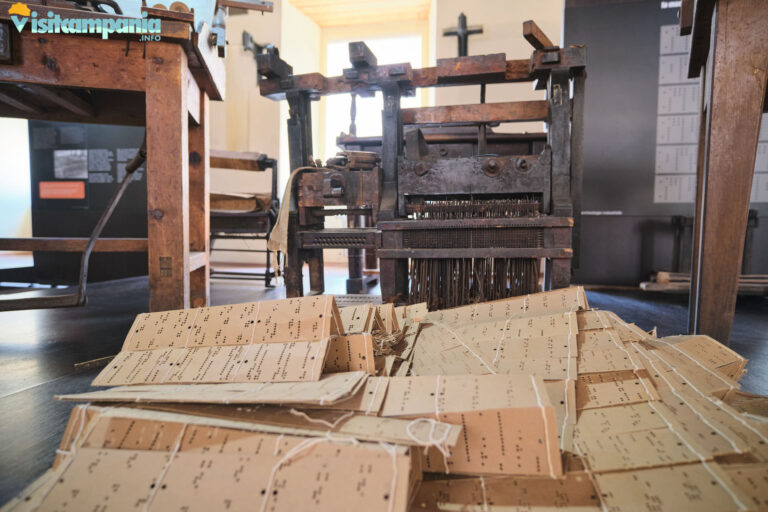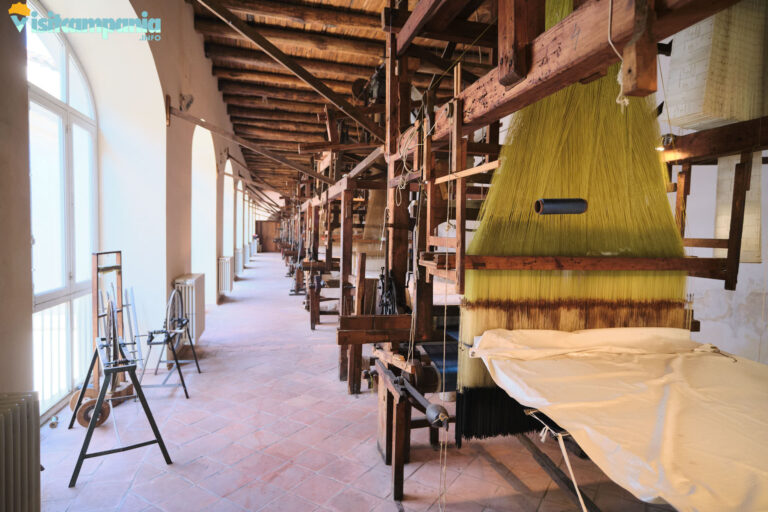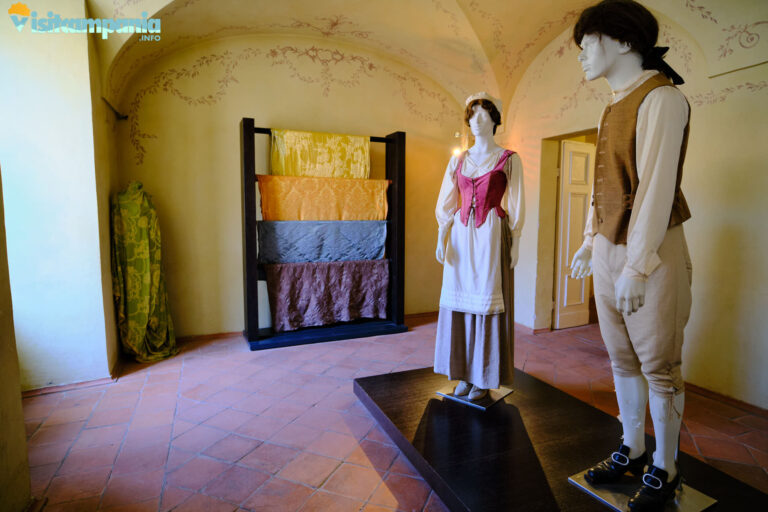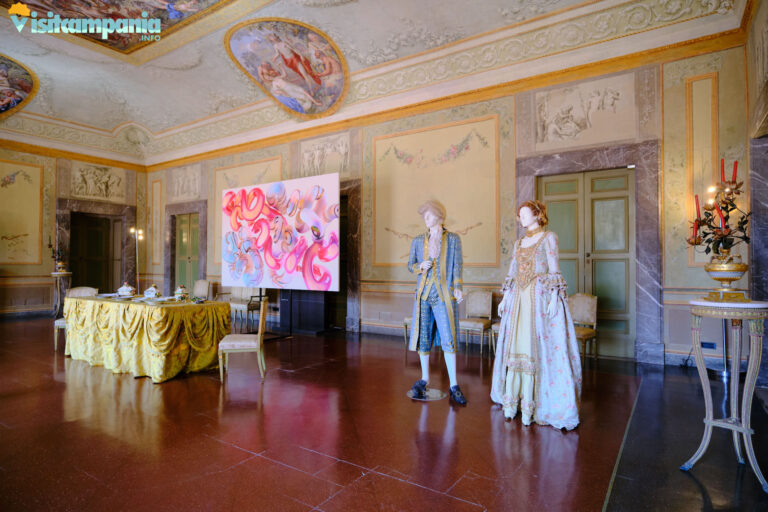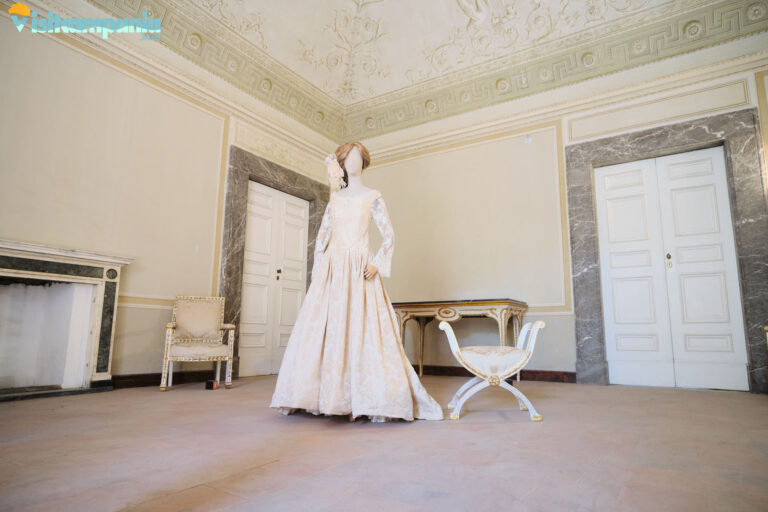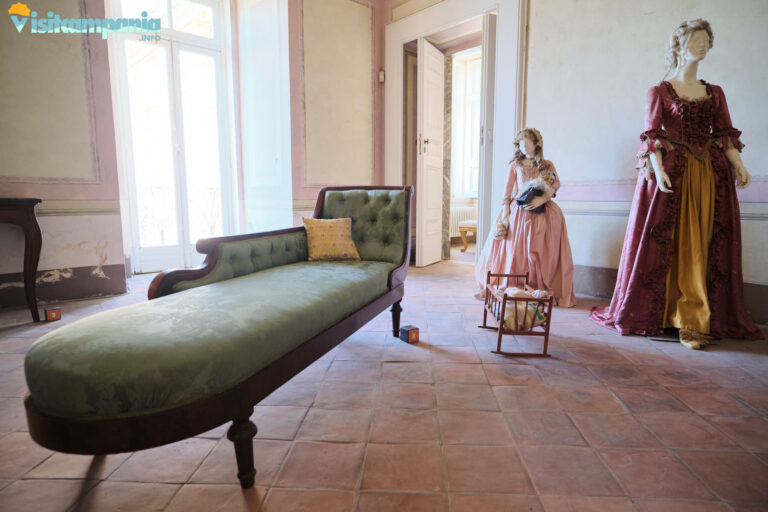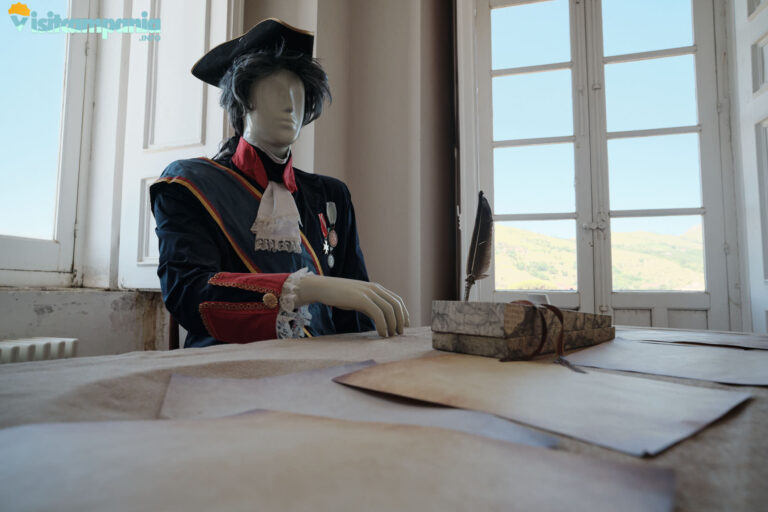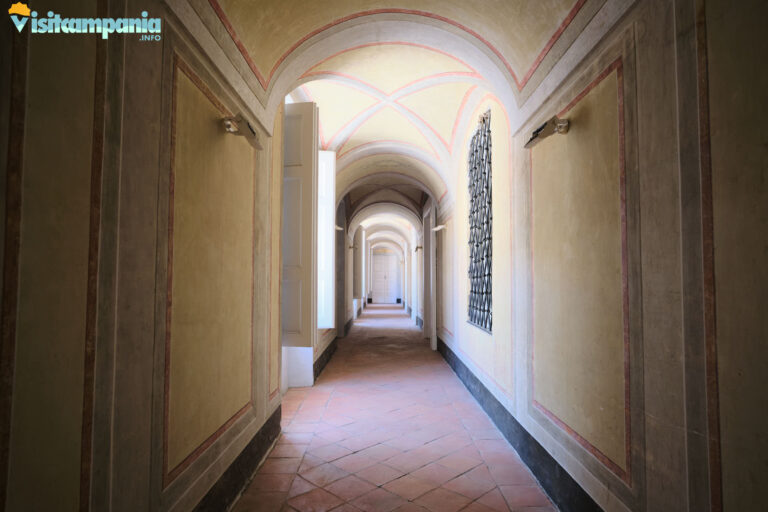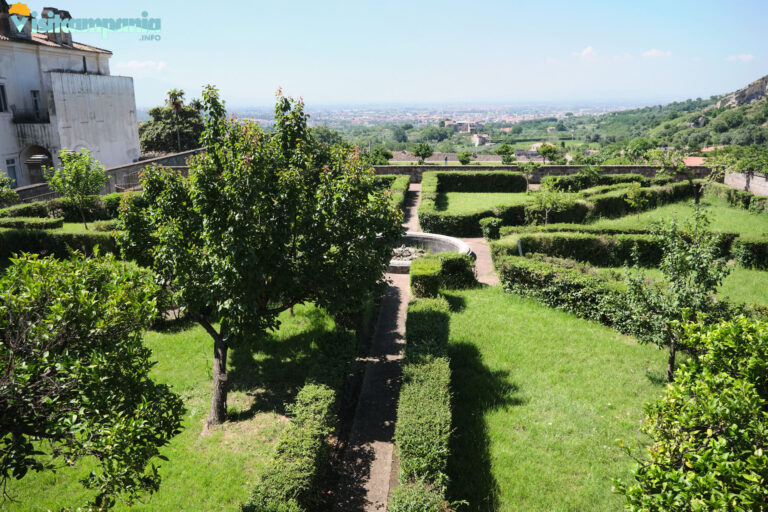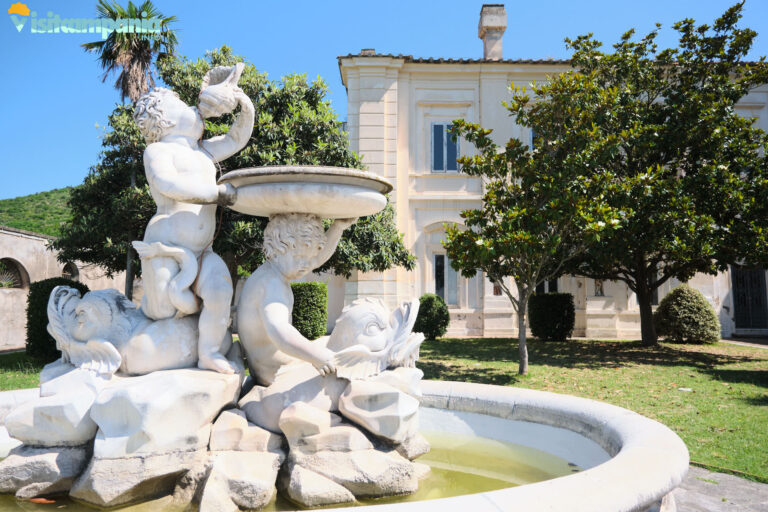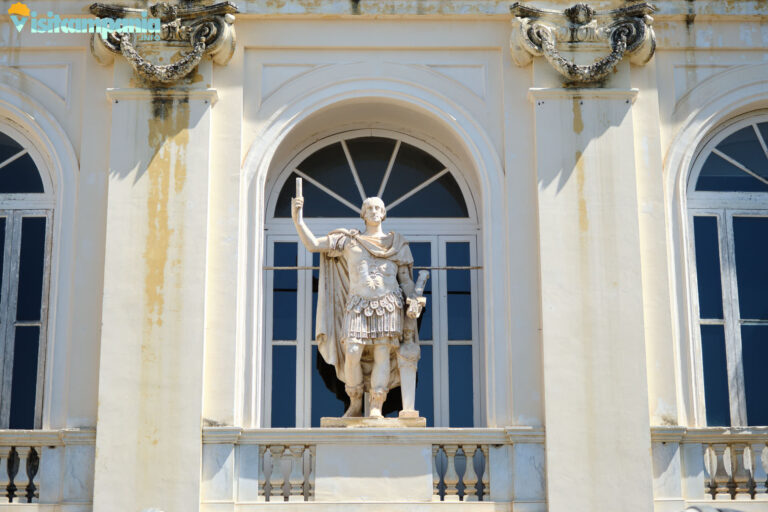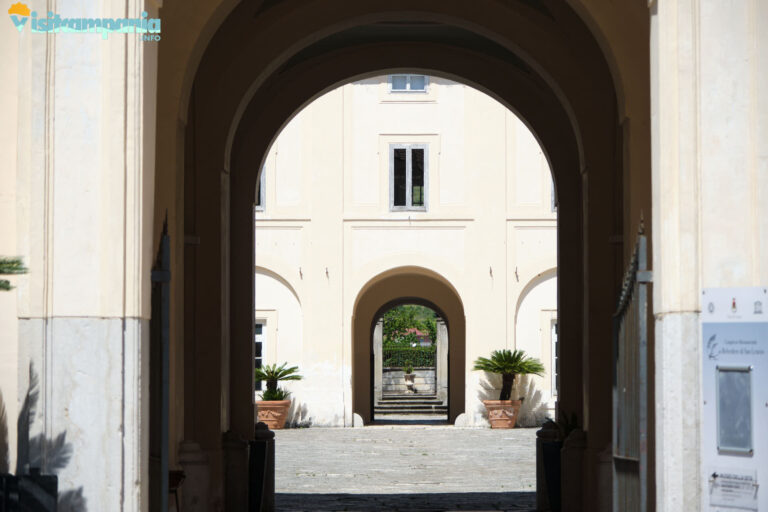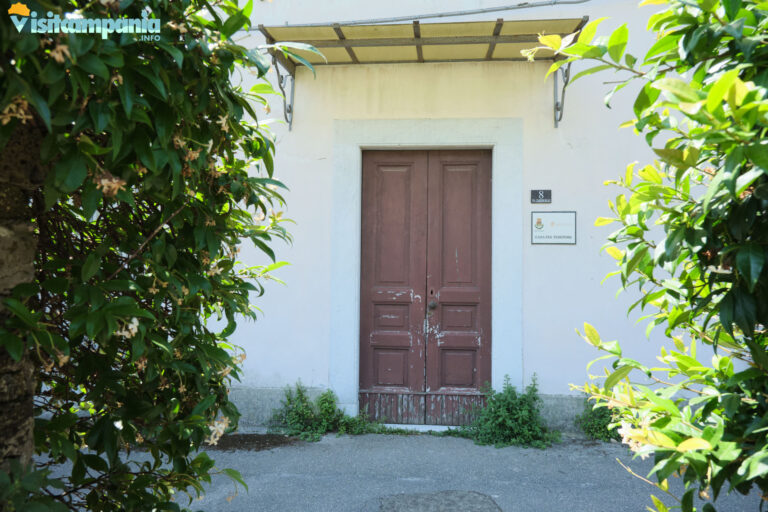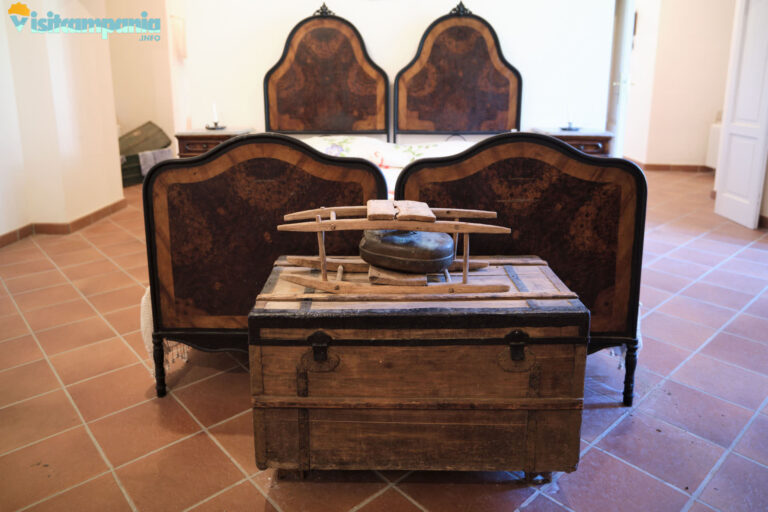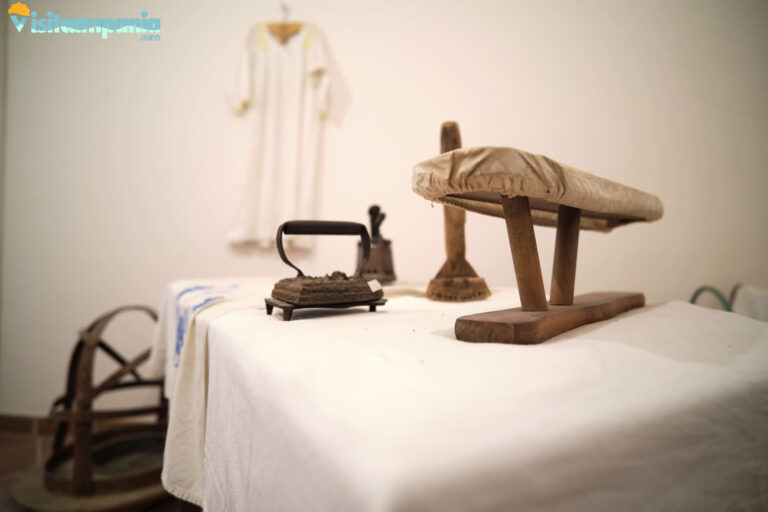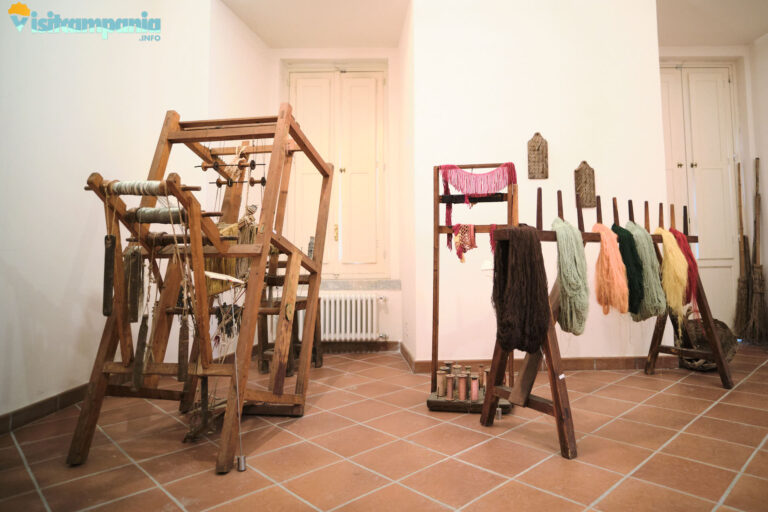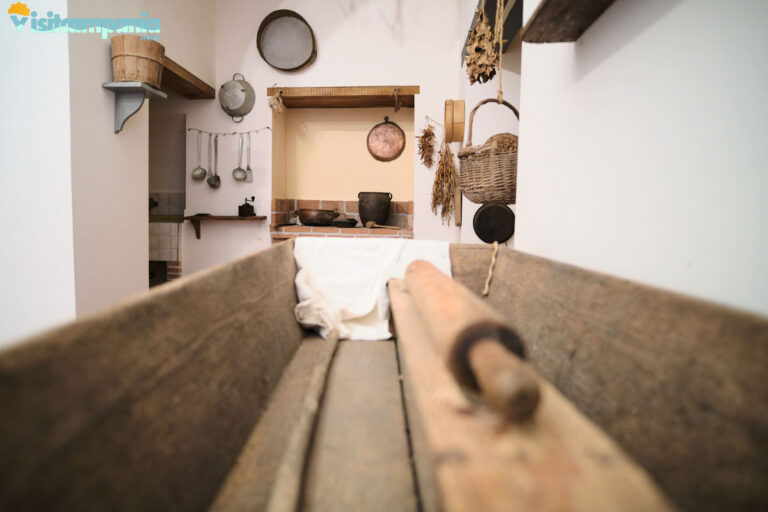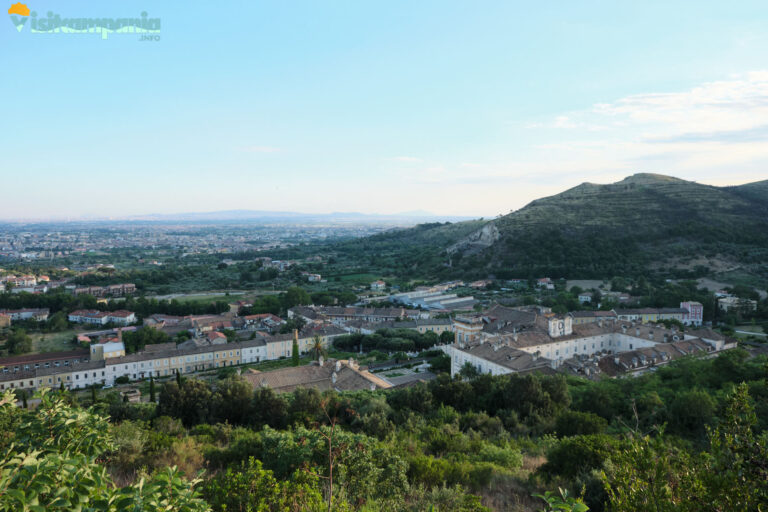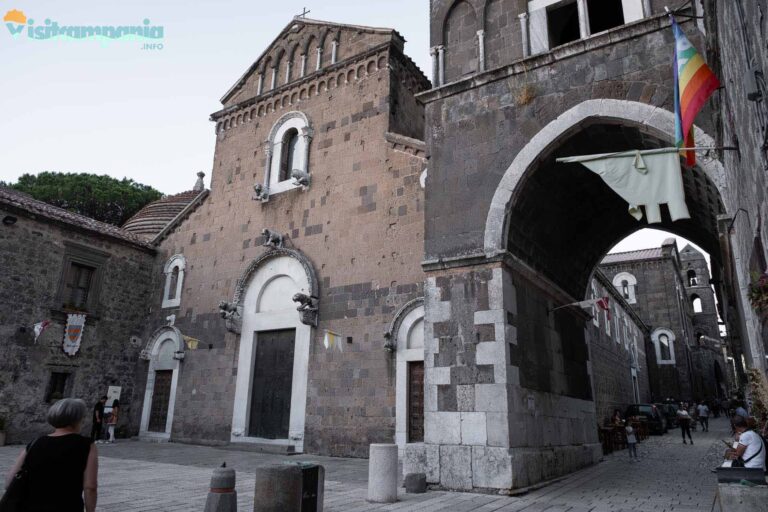What is the Real Belvedere of San Leucio?
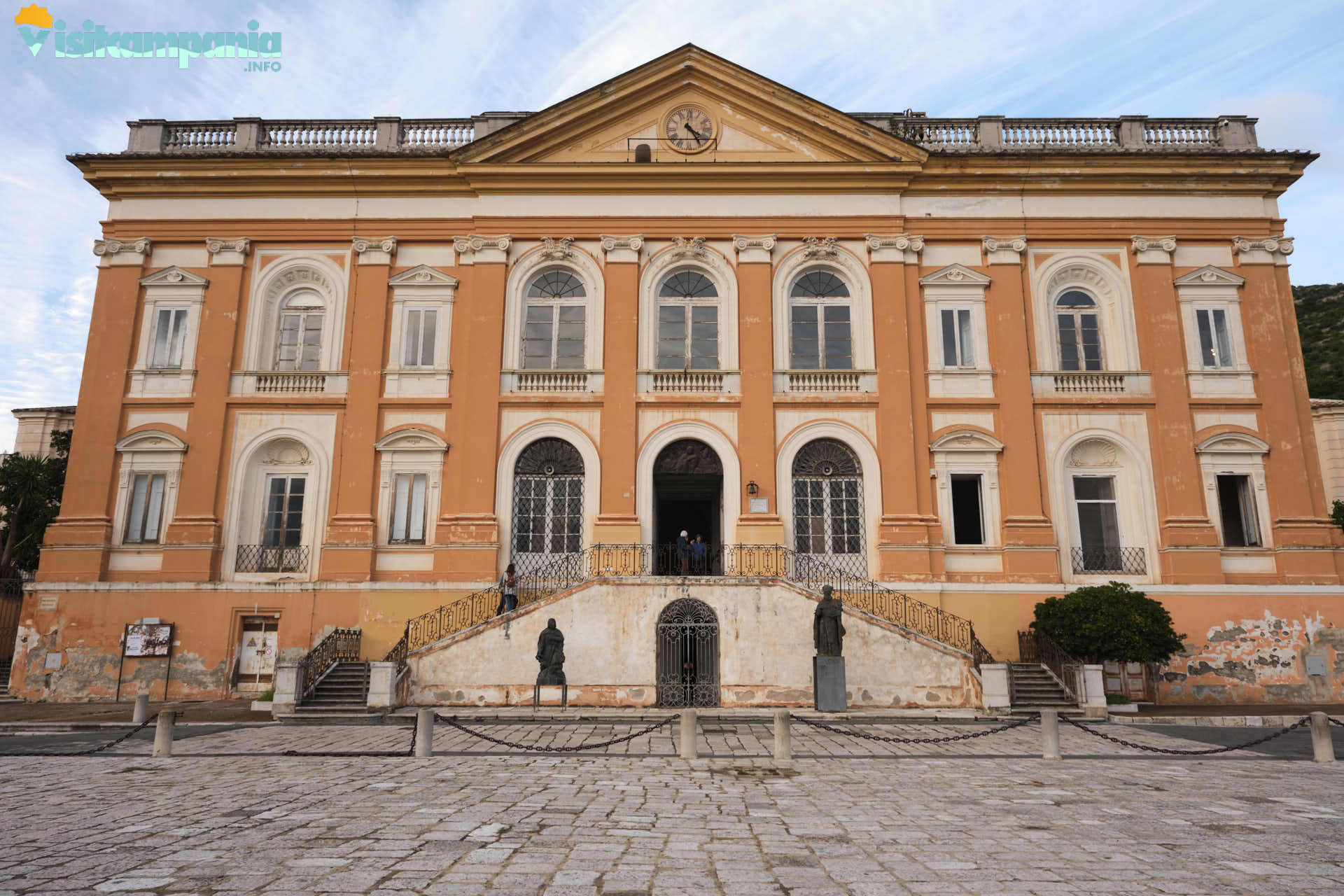
The Real Belvedere of San Leucio is an architectural complex commissioned by Ferdinand IV of Bourbon. It consists of royal apartments, a silk factory and a garden. It is the fulcrum of a larger urban and social project that was supposed to lead to the birth of a new city, Ferdinandopoli, which was never completed. The village of San Leucio, not far from the center of Caserta, develops around the Belvedere and constitutes the actual part of the new city.
The Real Belvedere of San Leucio now houses the Silk Museum.
Together with the Royal Palace of Caserta and the Carolino del Vanvitelli Aqueduct, the Real Belvedere is considered a UNESCO World Heritage Site.
Before being purchased by the Bourbons, the Belvedere Palace was a residence of the Acquaviva princes. It consisted of a rectangular building with a central courtyard in the Renaissance style. Subsequently, other buildings were added. Finally, during the French era was added, on the right side of the complex, the spinning mill and in 1823, above this, the coculliera, that is the room used for the storage and preparation of silkworms waiting for the traction.
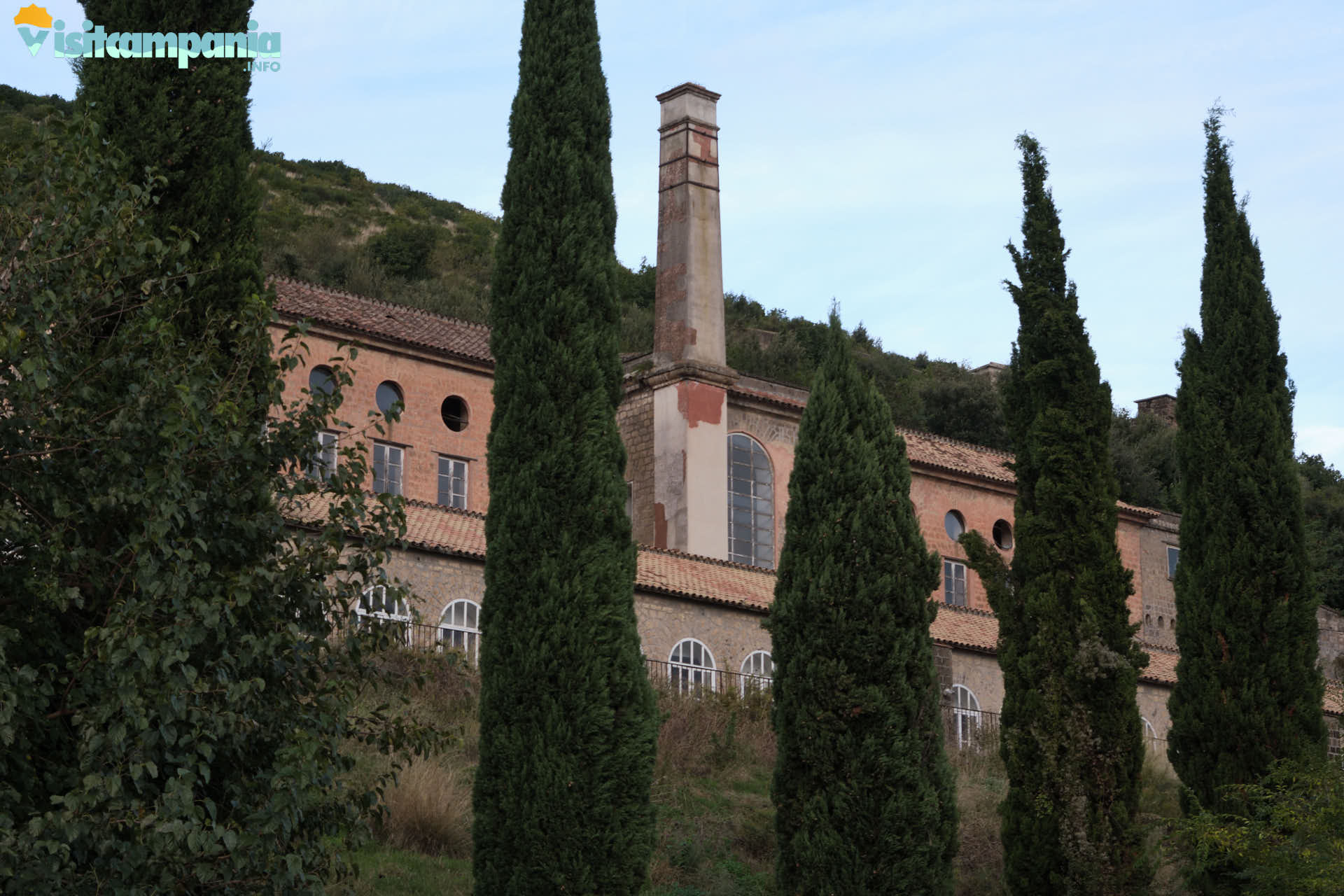
What to see in the Real Belvedere of San Leucio
The Real Belvedere of San Leucio now houses, in a limited part of the larger complex, the Silk Museum divided into three sections:
- Industrial Archaeology;
- Royal Apartments;
- Royal Gardens;
In addition, not far from the Belvedere Palace, there is the Weaver’s House, accessible with a separate ticket.
Also inside the Belvedere, but accessible free of charge only during the Eucharistic celebrations (Saturday at 5 pm and Sunday at 11 am), is the Church of San Ferdinando Re.
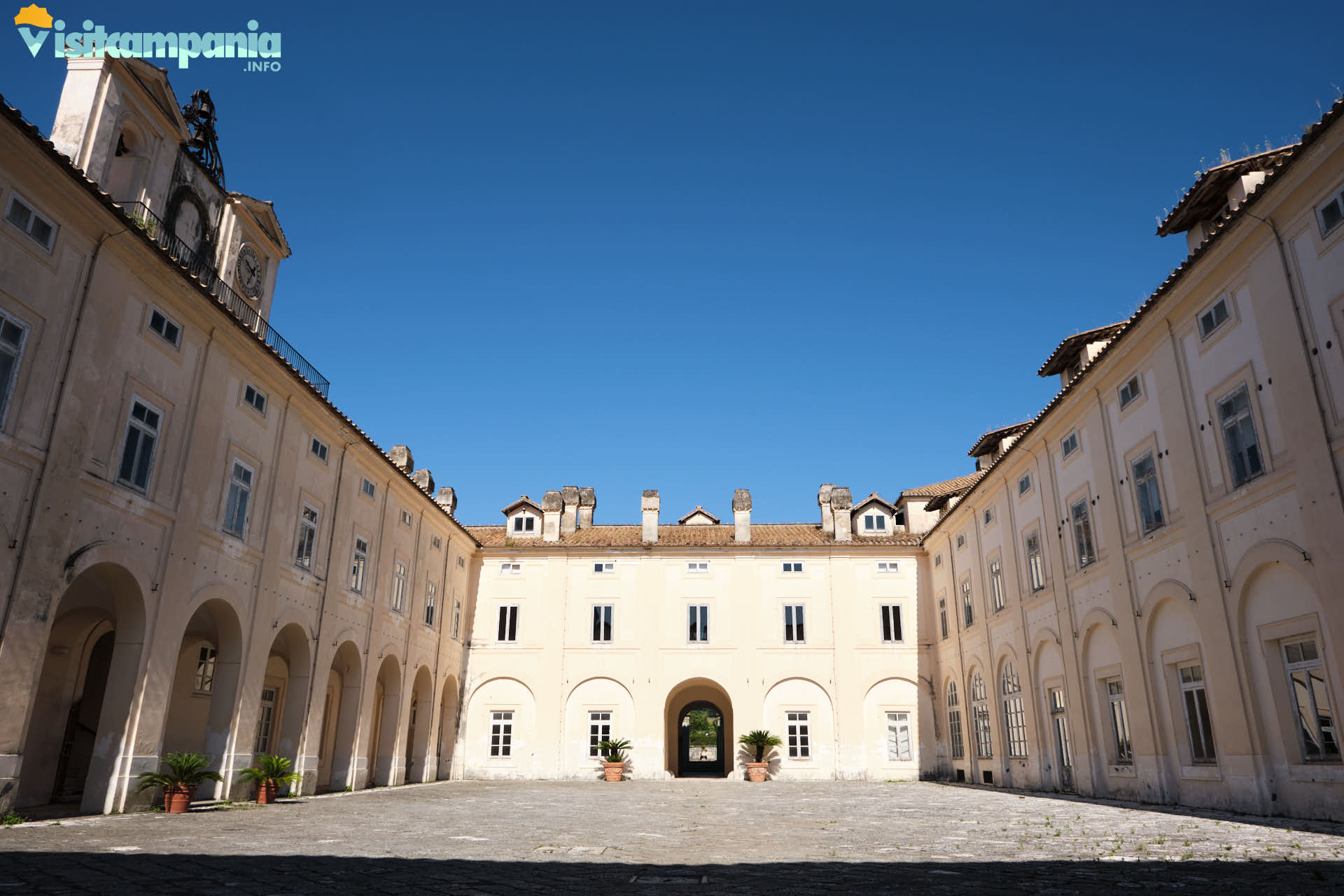
Silk Museum
Industrial Archaeology
The tour starts from the Industrial Archaeology section. It starts from the ground floor of the main building, where once, among other things, there was the school, the home of the parish priest and the teacher. Immediately you come across the cocoons of silkworms, the tools for reeling and the first rooms used for dyeing, with the tanks dug into the floor. Also on the ground floor you can see two large cylindrical wooden twisters , also known as silk mills, on which 1200 spools rotate in unison. These twisters, originally driven by a water wheel located underground, were rebuilt in the nineties of the last century following the original drawings.
The industrial archaeology section then continues on the first floor where the loom rooms were located. There you can admire numerous machinery and equipment of the time used in the processing of silk. These include nine handlooms, fully restored and in working order, and some punched card Jacquard machines .
Finally, at the end of the section, various fabrics of modern production are exhibited. They testify to the fame that local silk production enjoyed, and in part still enjoys. It is no coincidence, in fact, that the silk used to furnish some of the most prestigious residences and institutional buildings around the world comes from here. These include the Quirinal Palace, the Vatican, the White House and Buckingham Palace.
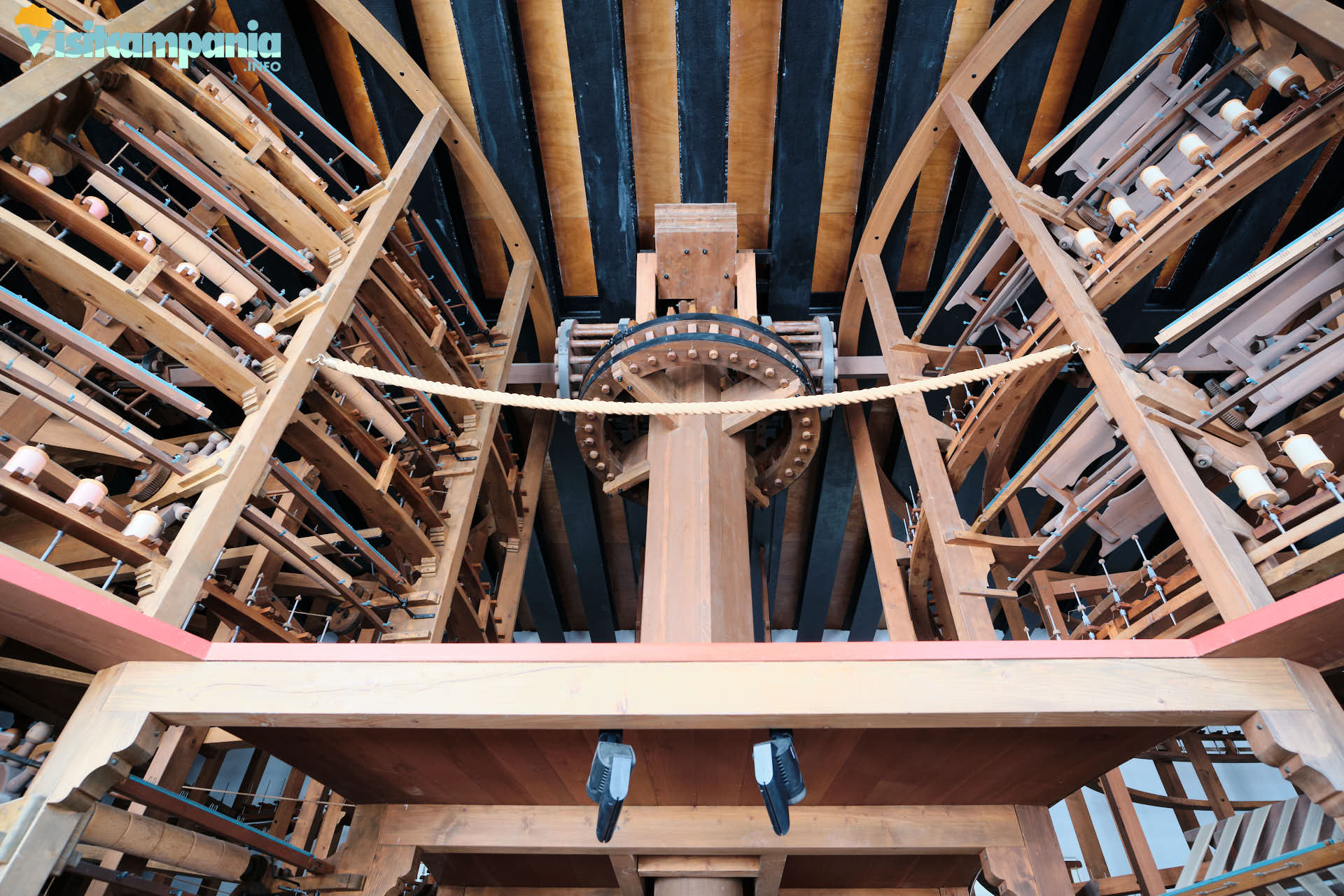
Royal Apartments
At the end of the industrial archaeology section , there is direct access to the royal apartments, also located on the first floor. It is a series of rooms intended for various uses, dining room, bedroom, bathrooms, reception rooms, in which it is possible to admire the creative use of silk in art and furniture, helping to make the Royal Apartment a truly fascinating place.
Among the most interesting rooms is the Bagno di Maria Carolina. It is a large room almost entirely occupied by a large pool surrounded by steps. The room is fully decorated with encaustic paintings executed in 1792 by Philip Hackert, the first court painter. The encaustic technique, already known in Roman times, consists of using colors mixed with wax and gives the painted surface a particularly bright, almost translucent appearance.
Other valuable rooms are the dining room, decorated with paintings depicting stories from the life of Bacchus, and the bedroom on the ceiling of which stands the fresco of the Aurora by Giuseppe Cammarano, former professor at the Royal Academy of Fine Arts and author of other valuable masterpieces in the Royal Palace of Caserta.
Finally, I would like to point out the Coretto from which the sovereigns could attend the liturgical celebrations in the church of San Ferdinando Re below, where in the Renaissance era it was the ballroom. The church is still open for worship. It is accessed from the double flight staircase on the main façade right in front of the panoramic open space overlooking the village below and from which it is possible to see the Gulf of Naples with its islands and, on the left, Vesuvius.
In addition to these, there are also numerous other rooms including a small study in the south-west corner of the building and other rooms all united by the precious presence of silk.
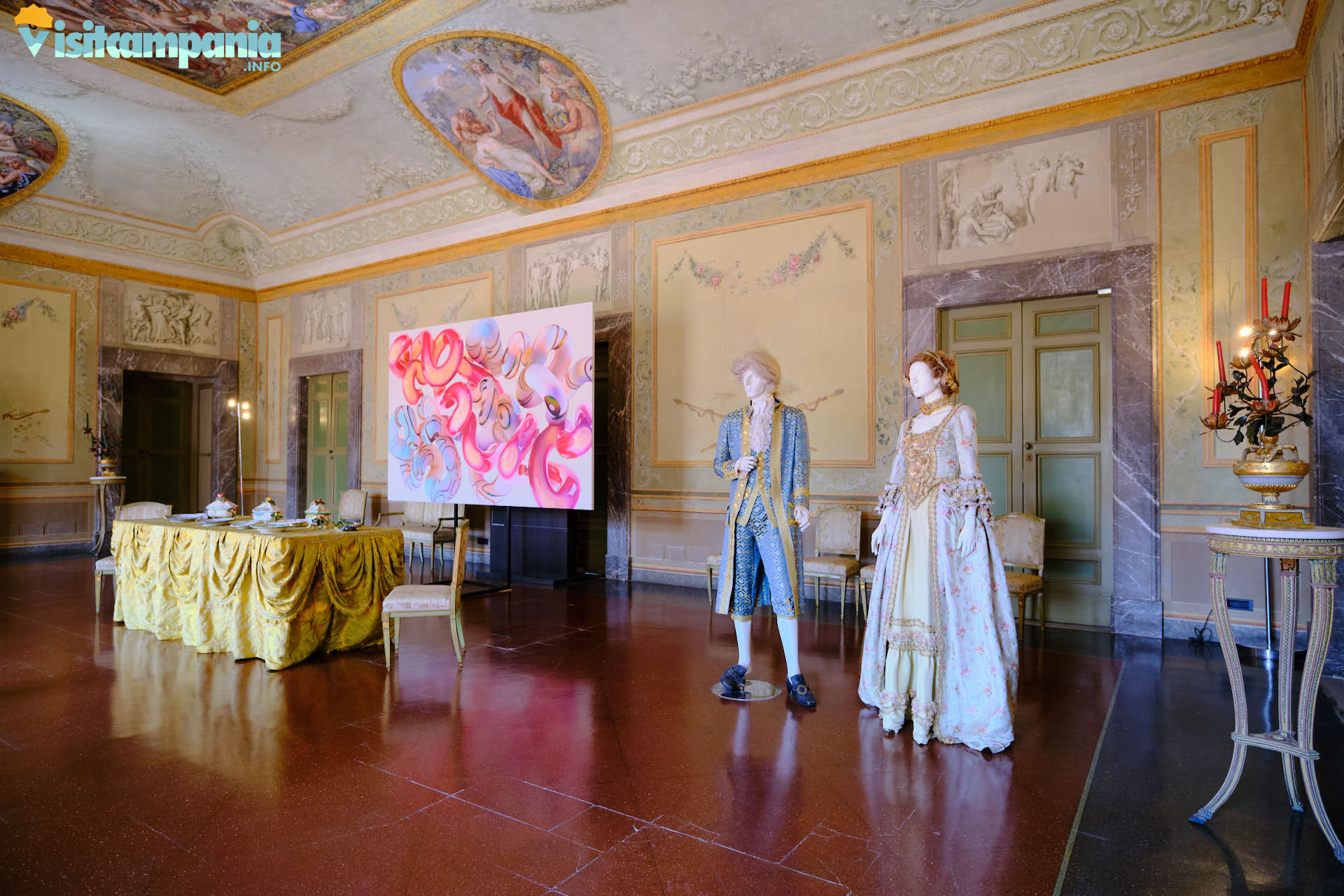
Royal Gardens
Once you have completed your visit to the inner sections of the Silk Museum , it is time to go to the western part of the Royal Belvedere. Here you will find the Italian gardens, restored to their original appearance after in-depth studies and surveys.
Articulated on different levels connected by ladders, they house in their geometric structure fountains surrounded by fruit trees such as pear, apple, peach and pomegranate. There is also a section dedicated exclusively to citrus fruits.
The visit to the garden is included in the ticket to the Silk Museum but, for safety reasons, it is not allowed in case of bad weather.
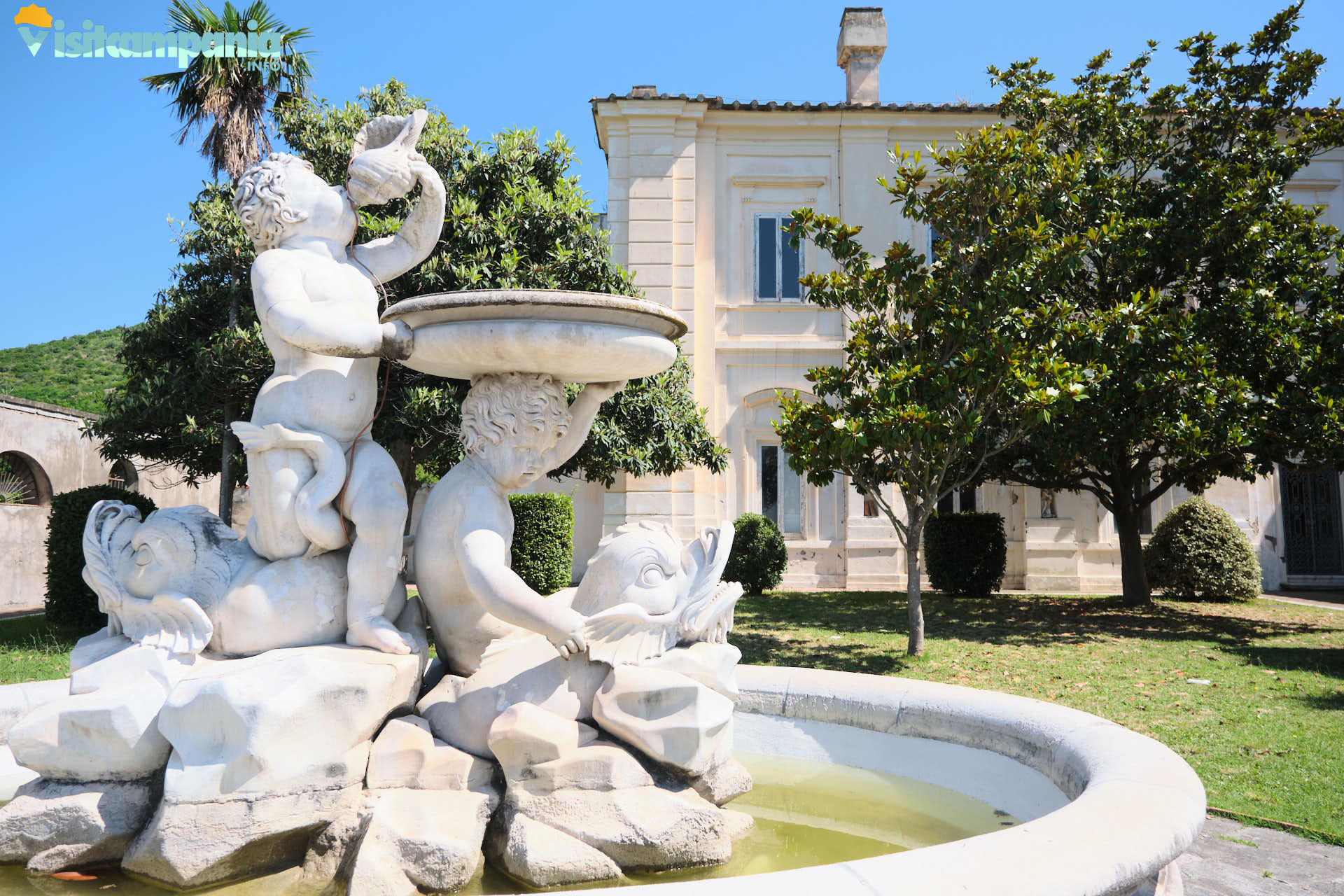
Weaver’s House
Located outside the Real Belvedere, at number 8 of the building on the right of the two that stretch at the foot of the double flight staircase that leads to the factory, the Casa del Tessitore is one of the thirty-seven original residential units. It is a representative example of the home of the Leucian worker.
Furnished with furniture from the early 1900s, it offers a reconstruction of the living conditions of the workers, opening a window on the daily life of the time.
All the houses, which were spread over two floors, were equipped with toilets, running water and a small vegetable garden at the back to ensure the well-being of the workers’ families.
The house, already furnished, was given free of charge to the workers by the King and, among the furnishing elements, a frame like the one that can still be seen on the ground floor stood out. This loom was intended, among other things, to allow pregnant women to work from home without the need to go to the factory. It also allowed young people still engaged in learning trades to train and acquire the skill without which they would not have been able to marry and start working.
The weaver’s house can be visited with a separate ticket from that of the Silk Museum.
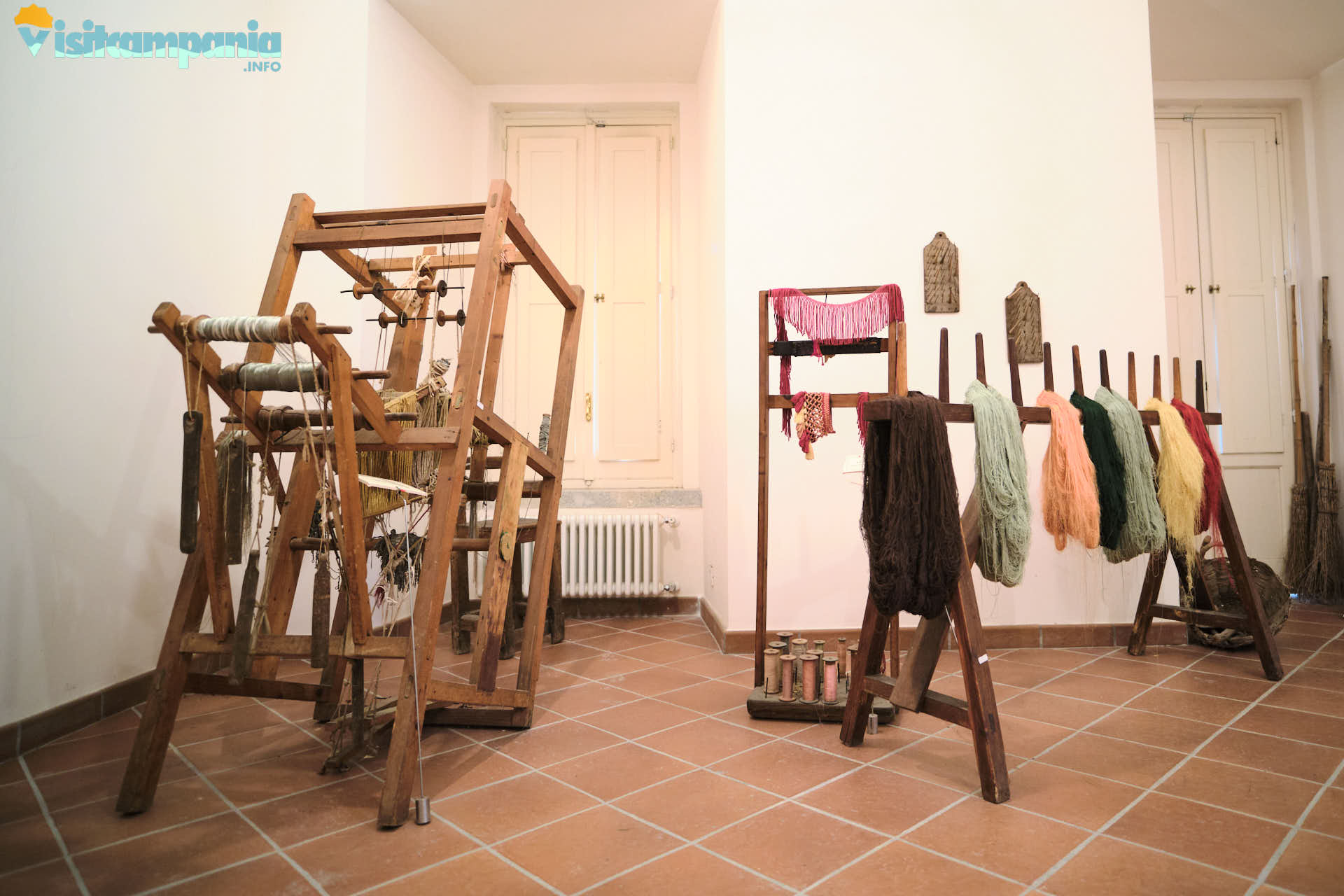
Background
The origins of silk processing in the Kingdom of Naples
Silk processing was nothing new for the Bourbon kingdom. Already from the end of the fifteenth century the art of silk production was known in Naples and Catanzaro. growing significantly in importance during the seventeenth century under the Aragonese. It is still possible to visit Naples today a tangible sign of the importance reached by the Silk Guild At that time: Church of Saints Philip and James, built by the rich and powerful Corporation in 1641.
The Bourbons, Charles I and Ferdinand IV in particular, were responsible for the transfer of production from Naples to San Leucio in the mid-eighteenth century.
Ferdinandopoli
The history of the Real Belvedere and the village of San Leucio as we see them today begins in 1773 where there was a Renaissance residence of the Acquaviva princes.
It was Ferdinand IV of Bourbon who gave life to the project Attracted by the beauty of the places and driven by an innovative, and we could say entrepreneurial, soul, which had already led to the birth of other production sites such as the agricultural colony of Carditello And the School of Botany in the English Garden of the Royal Palace of Caserta.
The original idea, translated into concrete projects by the architect and urban planner Francesco Collecini, was to create a new city, Ferdinandopoli, gravitating around a silk factory.
Characterized by a completely circular plan, radial streets and a central square, it would also house a new Cathedral and a new theater and would have served to accommodate the factory workers.
The workers’ houses, thirty-seven housing units still inhabited today, make up the largest portion of today’s village of San Leucio and are lined up on two houses at the foot of the double flight staircase that leads to the Belvedere palace.
In order to give concrete effect to the project and set in motion the production complex, supported by the king with considerable resources, thebest experts in the art of silk, French, Genoese, Piedmontese and Messina artisans, were also attracted to San Leucio. Thanks to their invaluable help, it was possible to teach local workers processing techniques, build machinery and manage production.
At the same time, many young people from San Leucio left to gain experience abroad, returning with valuable knowledge to share.
Ferdinand IV also promoted the cultivation of mulberry trees and silkworm breeding for the production of silkworms. A complete and sustainable production cycle was thus created.
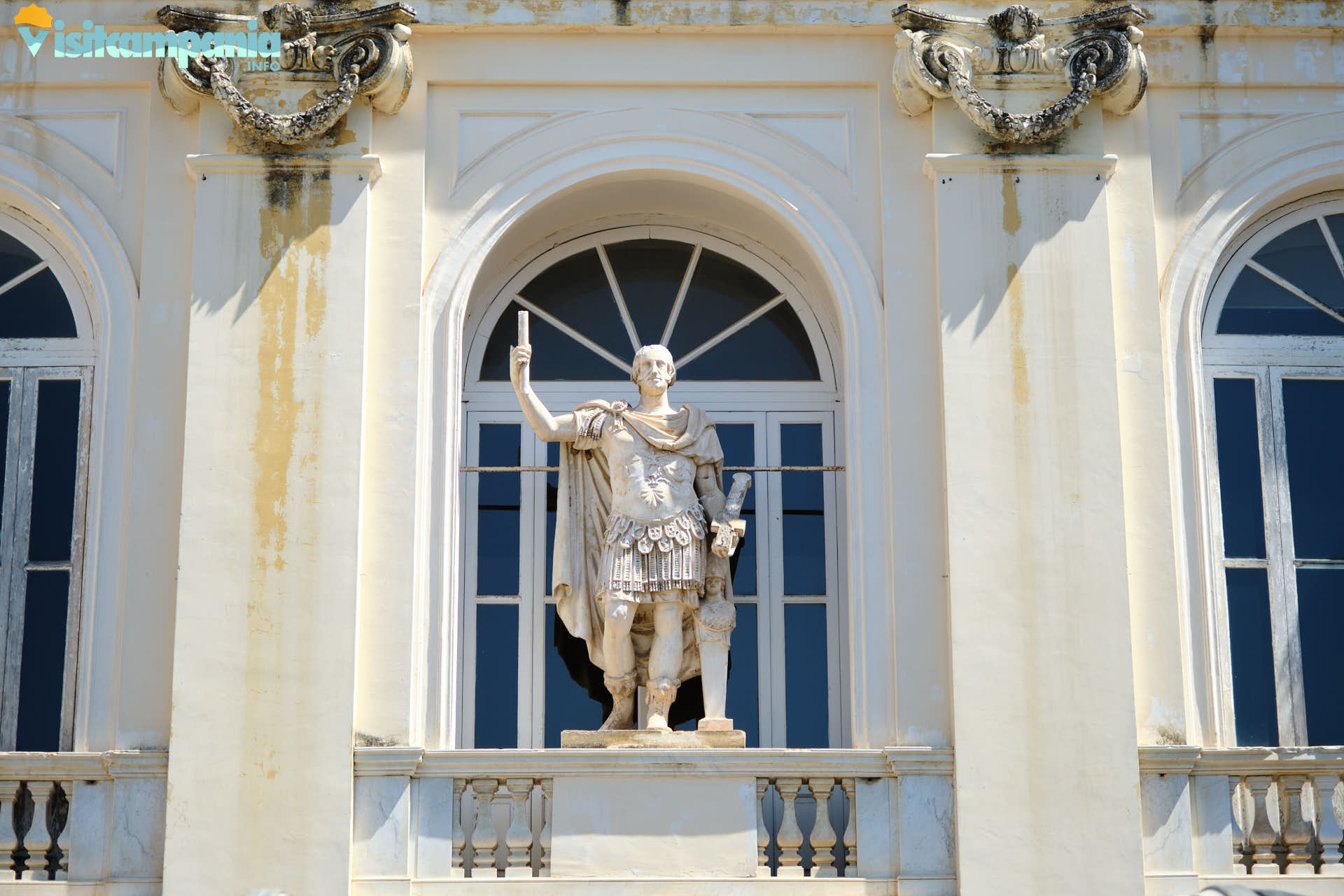
The Statute of San Leucio
The real distinguishing point of the city to be built was, however, the special status. Issued directly by the King in 1789, it was inspired by the teachings of Gaetano Filangieri. The statute was based on the principles of equality and merit. It reflected the aspirations of enlightened despotism and real socialism of the time and placed the Royal Colony of San Leucio at the forefront of the Age of Enlightenment, a model of justice and social equity that was rare in the eighteenth century but would still not look out of place today.
The statute regulated the life of the inhabitants of the Royal Colony down to the smallest detail. It was not only life inside the factory that was regulated, but the set of rights and duties of the inhabitants towards the state and each other.
With specific reference to life in the factory, of particular importance was the fixing of daily working hours at 11 hours , while in the rest of Europe it was not less than 14. The minimum age for access to work was 15 years, while in the rest of Europe it was not uncommon for children to work as young as 6 years old.
The technical education of the workers was planned and regulated, aimed at acquiring the necessary expertise to be able to work in the factory. It was entrusted to various Directors of the Trades. These had to attest to the expertise achieved by the young people in a particular profession so that they could marry in San Leucio. This was not on a whim but because only the ability to work in the factory could ensure them a decent income on which to found their new family. Finally, there was no preconceived difference between individuals, regardless of the work done. Men and women enjoyed total equality in rights, duties and opportunities in a system based solely on merit.
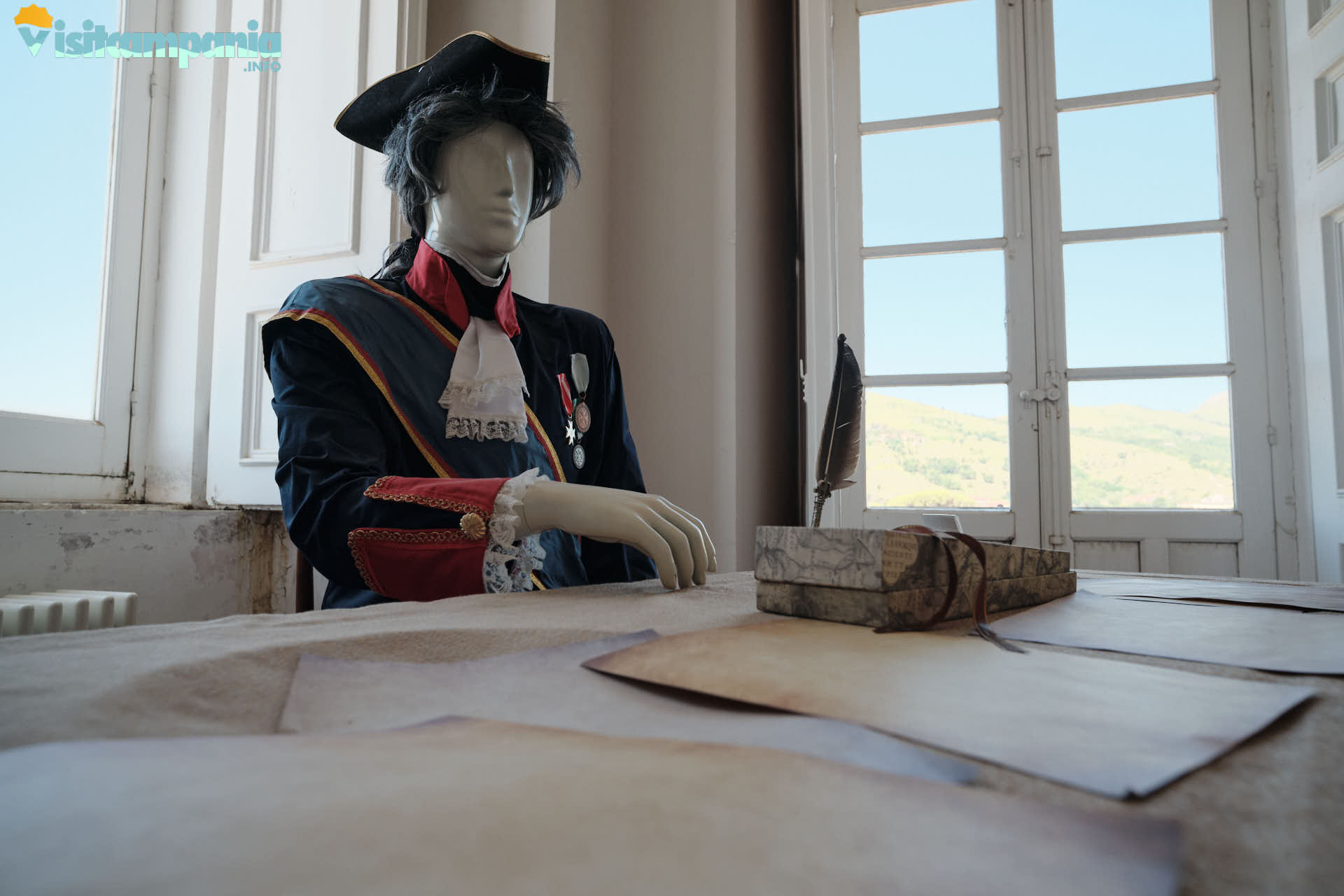
The End of Utopia
The events following the French Revolution, the advent of the French Republic and the reign of Joachim Murat, put an end to the utopian project of Ferdinand IV. Not even the Bourbon Restoration of 1815 gave new impetus to the project even if there were some expansion works that took place even during the French period.
The unification of Italy laid the tombstone on the industrial future of the village and on the statute. Partly acquired by the state and partly managed by private individuals, the village and the silk factories experienced a long and progressive process of abandonment and degradation.
Today the Belvedere Monumental Complex is owned and managed by the Municipality of Caserta. The old factory in the Belvedere stopped working in the 60s of the last century because the various working families moved to the surrounding territories to open new modern factories and continue production, which is still of great value today. Since 1985, the Belvedere has seen the beginning of major restoration and re-functionalization works that were completed in 2000, when it opened to the public. It became a museum in 2011 and offers spaces for conferences and events.
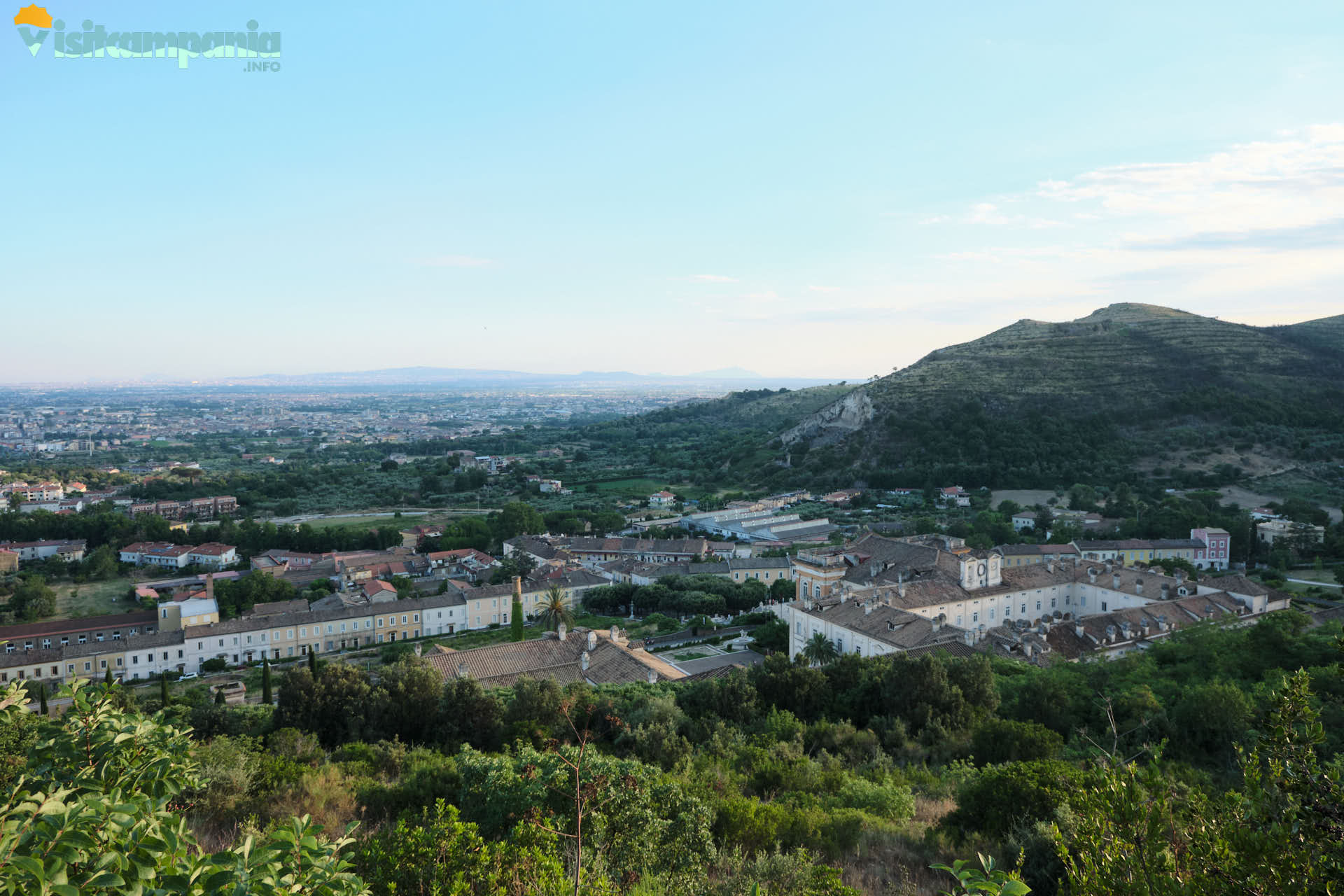
Tips and curiosities
- If you have time, I recommend that you take the short dirt path that, starting from the nearby hamlet of Vaccheria, follows part of the route of the boundary wall of the Real Belvedere and allows you to admire the entire monumental complex, the village of San Leucio and the Gulf of Naples up to the island of Capri from above. The path is almost completely flat, well marked and suitable for everyone, even children;
- I remind you that there is a special rate of only € 4 for residents of Caserta. If you haven’t already, don’t miss the chance to discover your city’s roots;
To learn more
- SAN LEUCIO / STATUTE AND VILLAGE OF “FERDINANDOPOLI” / THE UTOPIA OF FERDINAND IV (video);
- Trails. – Silk Museum of the Real Belvedere of San Leucio (video);
- Belvedere Complex of San Leucio – Camper 31/07/2023 (video);
- http://www.sanleucionline.it/home.htm (website);
- https://www.realparrocchiasanferdinandoresanleucio.it (website);


